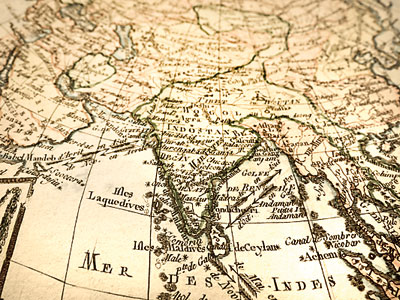Lessons on Lanka in a Southern Atmosphere
It’s never easy teaching about Sri Lanka in a World Literature class full of Southern Americans who assume that I am Indian or from the Middle East. And, it is impossible to find any literature written by a Sri Lankan in the three grand volumes in Norton’s Anthology of World Literature. Nevertheless, in my absolute determination to speak of Sri Lanka and our wonderful history I found some gems in the travel literature section. Both Ibn Batuta and Marco Polo are featured in the Norton Anthology, and “lo and behold!” they speak of Ceylon in a brief description of their journey of discovering the treasures in India. Now you can just imagine my utter delight upon discovering this literature. However, I needed to find a way to show the importance of Polo’s writings on Ceylon and its connection to Ibn Batuta. Since I know Americans love their Cinnabons (a roll that is far too sweet for Lankan taste buds), cinnamon sticks and cinnamon churros I found the perfect segue for the lesson on travel literature.
First offer them the “groundbreaking news” that Sri Lanka is a number one producer of cinnamon in the globe. The class “oooo”s and “aaaaahhhh”s when I tell them this information. Next I tell them how Ibn Batuta and Marco Polo were travelers who were also interested in the spices available in East Asia and the “Oriental” splendors offered in the forms of yoga, acupuncture, kung fu, etc. that were fascinating to them on their adventures in the oriental landscapes.
Not much has changed since Polo travelled to Asia. I know my students in 2018 still find all of the “oriental culture” fascinating and mystic. Now bear with them! We are equally fascinated by the likes of Western culture. After all, I’ve seen the faces of Lankans at Times Square. New Yorkers cringe at the thought of the number of tourists who take a fancy to possibly one of the most polluted squares on earth. But our Lankans are enthralled by the lights and the wonders of the concrete jungle.
Before I digress, let me explain the lesson on Sri Lanka that I composed for my students. Armed with a cheap royal blue white board marker and an animated power point presentation I showed them videos and pictures of my glorious country. My opening slide though was a picture of Ibn Batuta (do a Google search, the man is quite the looker!). In Batuta’s writing he refers to Sri Lanka as Serandib and goes on to relate his time climbing Sri Pada. He says Adam’s Peak is one of the highest peaks in the world. Now Batuta didn’t have Google and a decent fact checker to dispute his findings. In fact, Adam’s Peak is roughly 7,300 feet high and a relatively short expedition in comparison to those across the globe. Either way, Batuta gives a beautiful description of the mountain. He says his journey was 9 days long and he followed in the “Mama Track” instead of the “Baba Track”. His pilgrimage was in veneration of the Muslim prophet Khidr who is believed to have visited the mountain. In another section he explains his visits to other parts of Sri Lanka where he discovered rubies and swarms of monkeys. On a side note, Batuta’s colorful account of the Ceylonese monkeys and their behavior is certainly worthy of further study.
Subsequently, Polo featured in my lesson. In his chapter on “The Island of Seilan” (the abridged version in the Norton Anthology) he too visits Adam’s Peak and admits that both followers of Christ and followers of Buddha worship what he calls a “tomb” placed on the apex of the mountain. The travel writing of Batuta and Polo then reveal a wonderful aspect of Sri Lankan culture. One place of worship that is common to the Buddhists, the followers of Christ and Muslims. Three different ethnicities and religions congregate at the top of this mountain and it amuses my students. To them it is remarkable that an island as big as West Virginia is so diverse and culturally vibrant.
Moral of the story: Lessons taught and lessons learned. Connections established. When my students hear about Lanka and see its beauty I know at least one of them will visit. Plus, it’s always good to have a student be my fact checker so I don’t end up providing fake news as was the case with poor Batuta!
(The writer is a Sri Lankan who resides in the deep South of America. Living in a quaint college town teaching English and World Literature to university undergraduates at an American University. Currently pursuing the final year of her PhD in English, she hopes to continue her journey of teaching, writing and exploring cultures.)


